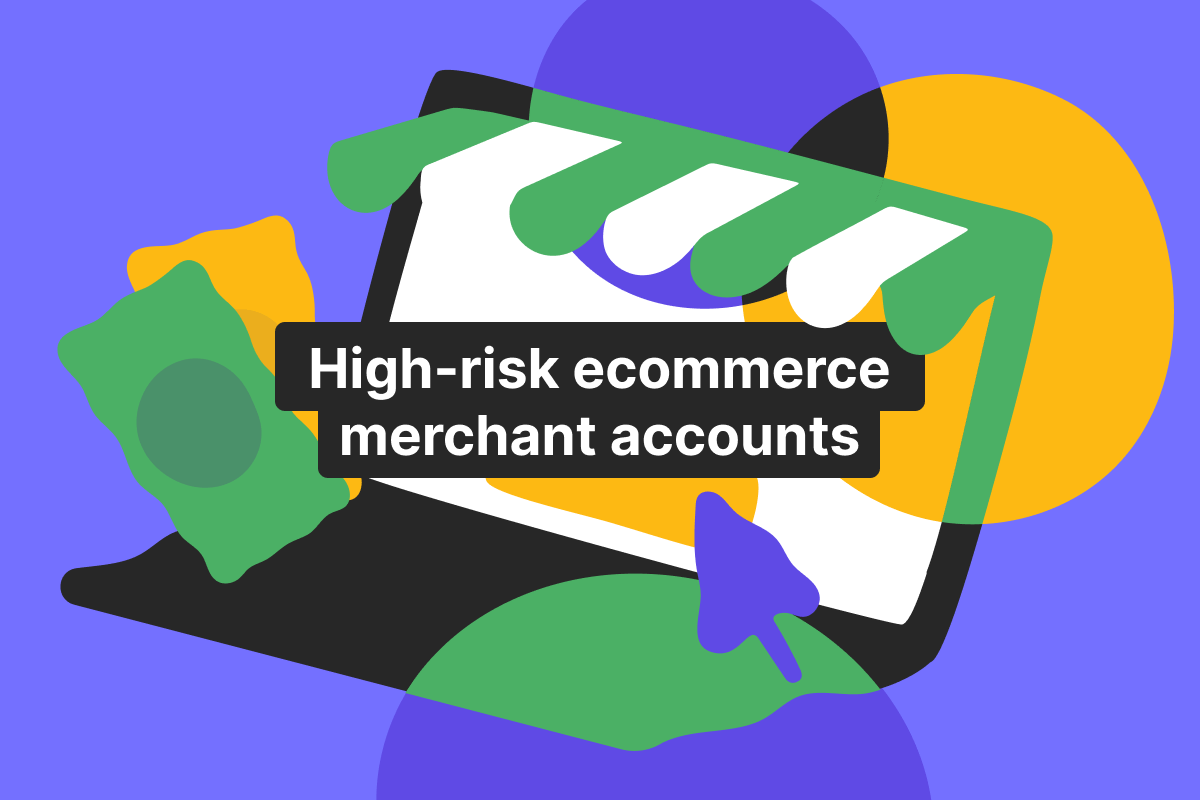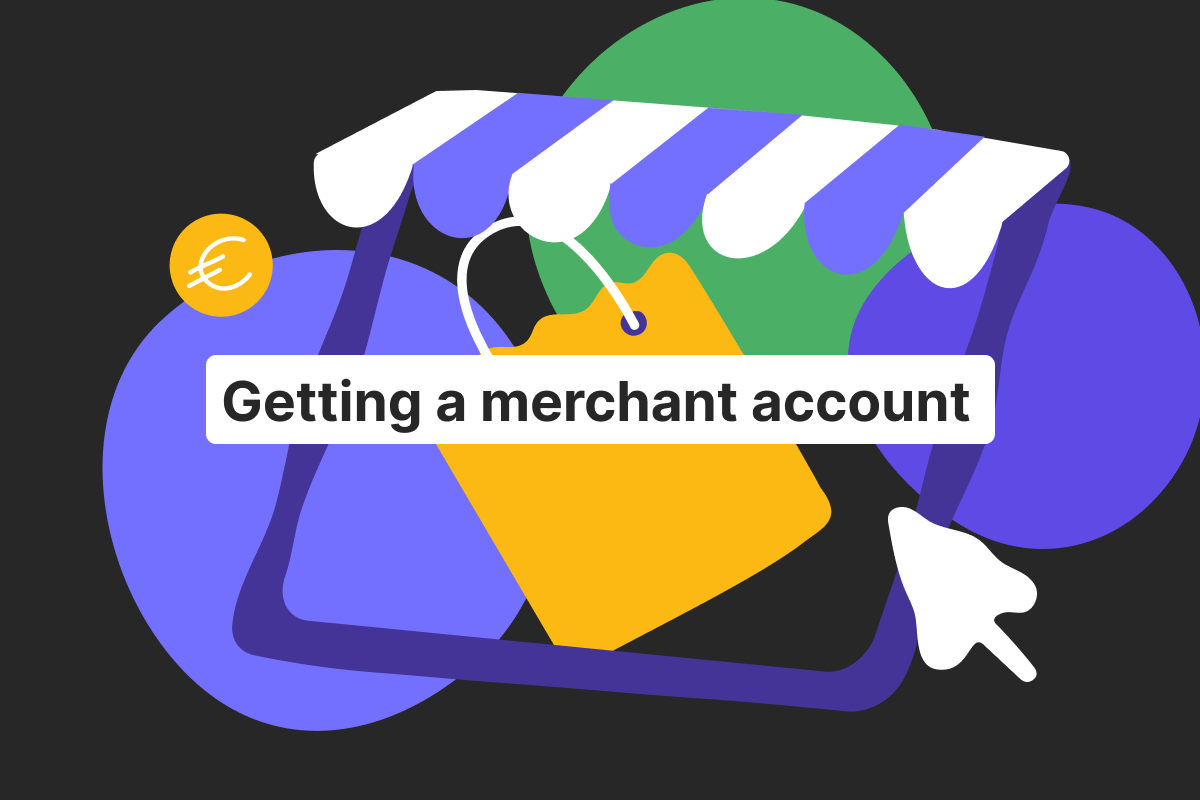Recent years have shown that moving your business online, at least partially, benefits your company. There are lower maintenance fees, fewer employees to locate in office spaces, and more customers you can reach online.
And, as more and more ecommerce businesses appear, it is crucial to stay up to date with the latest industry trends to keep your relevance to clients.
Learn the best techniques that will help you increase ecommerce sales.
Understanding ecommerce fundamentals
Ecommerce is a type of business that involves selling goods and services online. It encompasses various business models, from retail and wholesale to dropshipping and subscription services.
There are many factors one should take into account when starting to sell products online. This guide will go through them one by one.
Designing your ecommerce website for success
There is one unspoken rule about setting up an ecommerce store: You want this place to be unique, recognizable, and convenient. You must consider many variables, such as what customers like and dislike about an online store.
A survey of American consumers pinpointed common reasons people abandon their orders. For instance, 40% of respondents changed their minds because the shipping costs were too high. Meanwhile, 35% of respondents tapped out because of too long delivery times, and another 22% cited high service costs.
Designing your ecommerce store to be user-friendly is important to retain customers.
You can either create your website and stylize it as you see fit or use a platform or a marketplace to sell your products/services. In the second case, you will usually need to pay fees to use the website.
If you decide to manage the website, better not cut on hosting expenses.
If your ecommerce store fails to load due to multiple customers visiting it simultaneously, you won’t earn anything, and your reputation will be affected. Mind the loading speed of your website. If it is too long, the customer is more likely to leave. Ideally, it shouldn’t take more than 2-3 seconds.
Maximizing sales through effective marketing strategies
Using common marketing strategies is one of the proven ways to boost ecommerce sales and optimize your sales funnel.
Let’s take a look at those strategies for your ecommerce business model.
Ecommerce SEO
The first step in this field that can help you make more sales is optimizing your ecommerce website so that it can place in higher positions in search engine rankings.
Let’s see what you can do to improve your store’s SEO:
1. Before starting anything, ensure that your website works properly and can handle large amounts of traffic;
2. Hire an SEO specialist or use a specialized agency to figure out the complete portfolio of keywords you can use on your website;
3. Additionally, a business will need structured data markup for product pages to enhance search engine understanding;
4. Create a thematic blog, which will highlight topics relevant to your target market, as well as provide FAQs and tutorials;
5. Ensure that, inside the blog, you use both high-quality content and images that aren’t only SEO-optimized but also helpful for your clients;
6. Use links to your products inside these articles to get more customers.
Open an account
in Genome online
Email Marketing
Masterfully crafted customer emails can also be a part of your ecommerce success.
Here’s what to keep in mind when using your marketing efforts for creating emails:
1. Use eye-catching, informative subject lines and compelling call-to-action;
2. Separate email topics for different audiences – use analytics and metrics you gathered for the purpose.
3. Don’t spam too much – try offering only valuable content to sell products organically;
4. Ensure the visuals are perfect – from your email structure to the attached pictures. Keep your branding consistent;
5. Utilize A/B testing to identify what resonates best with your target market.
Social Media Marketing
Social media platforms are commonly used to attract new customers. Especially in the case of Facebook and Instagram, which have millions of users and are very visuals-heavy, which is great for ads.
Here’s how you can use social media to better generate sales:
1. Hire social media managers. You will need employees who will quickly respond to any questions and requests from clients on social media.
2. Use high-quality product images. As mentioned before, social media is a very visual space, so your products must stand out. Find unique ways to present your merchandise, take high-quality photos of it, and hire models if you sell clothes.
3. Benefit from integrations with social media channels. In our particular case, you can utilize Instagram Shopping and Facebook Shops to tag products directly in your posts and ads. This way, prospective customers have more incentive to start shopping right away.
4. Interact with your clients. Of course, engaging in discussions and answering clients’ questions is a must.
In addition, you can also encourage online shoppers to post photos of your merchandise to promote your products and build brand awareness.
5. Targeted advertisement. Use the powerful targeting options on both platforms to reach specific demographics, interests, and behaviors relevant to your products.
6. Offer exclusive perks for social media followers. Run promotional campaigns and offer rewards that will be exclusive to social media users who interact with your pages.
Influencer collaborations
In the age of unparalleled popularity of influencers across many social media platforms, you can try reaching their audience to increase your product sales.
Here are the steps to collaborate with a popular social media personality.
1. Do your research. Find an influencer who can represent your company and promote your products. Ensure that this person has a good reputation, is considered transparent by viewers, and has not been involved in any controversies in the past.
2. A company needs to ensure that its target customers align with the influencer’s audience.
3. Contact the influencer and make a deal: provide the guidelines for how you want your product promoted.
4. Before the influencer posts about your product, ensure that you know their script and what they will discuss during the promo. You don’t want inconsistencies.
5. Monitor the campaign’s performance using analytics to assess its impact on brand awareness and engagement.
Enhancing customer engagement and retention
Building long-term customer relationships is a sure way to increase your ecommerce sales.
Having undisrupted quality services is a given, but you also need to offer clients personalized experiences to increase the customer value of your products. Your ecommerce site can achieve that by offering individuals tailored product recommendations and lists of products they can be interested in based on their previous searches, demographics, location, etc.
Another option is to present loyalty programs for old-timers – so-called loyal customers. Repeat customers who have been using your online store can get discounts and rewards, which will create a sense of a deeper connection between these relations. You can even offer free shipping for some products to seal the deal.
Last but not least, of course, is customer service. Your customer base can have dozens of questions during and after the order process. Thus, you need a big support team that can handle client requests 24/7 and in multiple languages. It will also allow customer feedback to be collected to improve services.
Preparing for scale: tips for ecommerce business growth
Among multiple ecommerce tips, this one is significant. Once they start a business, the ecommerce store owners must be very precise about handling their inventory. On the one hand, there are worries that you can overstock, but on the other – what if there’s not enough product to match the demand?
This is where inventory management comes in. At its roots, your inventory size will depend on a couple of factors:
Clients’ behavior and preferences;
Market trends;
Product production time;
Product shelf-life;
Other data.
Of course, the numbers represented by these factors will fluctuate, and ecommerce platforms will need to adjust their inventory accordingly. Companies can do so with the help of special inventory management software that will track all the crucial metrics in real time.
It is crucial to have a clear shipping logistics plan, a flexible supply chain, and strong supplier relationships to keep up with orders and receive materials necessary for production on time.
As your online store grows, so will the traffic. Thus, you will need to look into software and solutions that can handle increased traffic and transactions. Usually, payment service providers for ecommerce products offer such tools.
Additionally, when your ecommerce sales are consistent and successful, you may start thinking about going international.
Before entering other markets, thorough research is needed to ensure that your product can compete and is in demand. You need to seek out and establish partnerships with local distributors and logistics providers when starting online sales in other countries.
Open an account
in Genome online
Security and trust: safeguarding your ecommerce store
The company’s desire to increase ecommerce sales must not overshadow its efforts to provide a secure experience to its customers.
You should pay attention to your website and customers’ data security. Genome’s team provided a detailed article on how to securely accept payments online, but the main thing you should pay attention to is 3D Secure 2.0.
3DS2 protocol is used for multi-factor authentication, which makes it easier to detect fraud. Merchants need 3DS2 to comply with the Revised Payment Services Directive (PSD2), so if your business operates within the EU, chances are you already know about 3D Secure.
Of course, other safety tools are required, such as website encryption. You can achieve this by using SSL certificates, which will hide the customers’ sensitive data during purchases.
In addition, you must be sure that your financial institution complies with the Payment Card Industry Data Security Standard (PCI DSS). Payment providers must abide by this standard, as it allows minimizing risks of fraud and data breaches during credit card purchases.
Optimizing payment solutions for ecommerce sales
You can’t quite increase ecommerce sales without having a payment provider – a financial institution that will help you handle your clients’ payments. Here are the ecommerce tips on how to select the right bank or PSP for your online store.
Streamlining payment processes
A streamlined payment process is a number one concern for many ecommerce stores. They need a bank that can process thousands of transactions at once, creating a seamless experience for clients at any time of day. At the same time, the PSP must have security tools in place to confirm the identity of customers during payments.
Additionally, the payment page itself must be clear and straightforward so that clients won’t get confused and leave the website prematurely.
There are three factors in the checkout process that need to be taken into account: transaction processing speed, security, and user-friendly UI. To access all three and make more sales, we recommend partnering with financial institutions that specifically work with ecommerce sales.
1. You can ask their representatives about approximate transaction speed and pick payment numbers;
2. Such institutions will already be complying with ecommerce-related legislation (but make sure to double-check on their website);
3. Ecommerce payment providers usually allow businesses to customize their payment pages to make them user-friendly. Moreover, they can offer solutions to integrate a customizable checkout page into your ecommerce app, like mobile SDK.
Offering multiple payment options
Speaking of payments, your customers will likely have different preferences when it comes to the ways they pay online. Yes, debit and credit cards are still very commonly used among people, but it doesn’t mean that all customers would want to use them exclusively.
There are a plethora of alternative payment methods that can be used for purchases, such as bank transfers, e-wallets, prepaid cards, mobile wallets, cryptocurrencies, and more.
The market share of payment methods in total ecommerce transaction value showed that, in 2022, digital wallets were the most popular version worldwide (49%). Their popularity reached a peak in the Asia-Pacific region (69%).
The second most common method globally was credit cards (20%), followed by debit cards (12%), account-to-account (9%), and buy now, pay later (5%).
Having a wide variety of payment options can ensure that a business will increase ecommerce sales in the long run. To select suitable payment methods, an online store needs to research the most widespread payment methods in the regions in which it operates.
Enhancing payment security
Ecommerce platforms usually also rely on financial providers when it comes to the implementation of tools for payment security.
Compliance with PCI DSS is only the tip of the iceberg in breach and fraud prevention. Banks utilize other features to protect businesses’ customers’ data.
For one, they utilize anti-fraud services that allow more thorough checks of transactions to help identify fraudulent cases. They also have instruments for chargeback prevention—they notify merchants before non-fraudulent chargebacks occur so that the company can issue a refund instead of a chargeback.
If you want to have a successful online business, the implementation of anti-fraud features is a must.
Choose the right payment solution for ecommerce businesses
All in all, the right payment solution for ecommerce must possess a number of characteristics:
Provide coverage for multiple online markets;
Offer multiple payment methods;
Provide integrations with platforms for online commerce;
Have the ability to process large transaction numbers at a time.
If you are looking for a reliable financial provider, try Genome’s business accounts. We offer a wide range of features for companies, from multi-currency accounts and international money transfers to corporate cards and batch payments.
Open an account
in Genome online
Utilizing analytics for ecommerce growth
Once everything is said and done, online stores will go live and start selling products and services to customers. However, to boost ecommerce sales and stay consistent over time, the business needs to use special tools to analyze its online store performance.
Let’s review the main metrics you will need to keep your eyes on to grow ecommerce sales.
1. Track the changes in your target market and the pick hours for visiting your online store to form a clearer sales funnel.
2. Monitor which pages are the most popular among clients and which products are the most in-demand.
3. Learn the overall browsing patterns and purchase history of your customers.
By monitoring this data, the business can do the following:
– Figure out the main shopping trends among customers – how long a customer spends on one page, which products they prefer, etc.;
– Learn more about the average customer journey and adjust processes accordingly;
– Segment your clients by categories, coming up with more suitable product categories;
– Determine if there are any weak spots in your website design, UI, or on the checkout page and improve client experience;
– Create more personalized marketing offerings based on client’s preferences;
– Better manage its inventory to prevent product shortages or overstocking;
– Get insights to quickly respond to market changes and customer needs.
Future trends in ecommerce
So far, we’ve discussed common tools to increase ecommerce sales and keep your own website afloat. However, your company needs to be aware of other trends that will likely shape the future of ecommerce and attract more potential customers. These are:
1. Virtual reality and augmented reality. These can be used to visualize products so customers can “experience” those in their environment. Imagine a person shopping for a couch – how neat can it be if the augmented reality app is applied, allowing to “place” couches into the rooms of potential customers to help them choose the best option design-wise?
2. AI-driven personalization. This tool allows you to gather even more specific data about potential clients, enabling you to create more tailored product recommendations and personalized shopping experiences.
3. Voice commerce. Online shopping is known for its convenience, and voice commerce will take it to a whole new level. This means that shortly, we might see more common usage of smart speakers and voice assistants for hands-free ecommerce sprees.
4. Eco-friendly approach. Yes, this trend has become quite common nowadays, but we expect it to become even more popular within the next few years, with companies finding more eco-friendly ways to manufacture and deliver their products.
These are only some of the future trends that can be highlighted. To make sure your business is successful and your ecommerce sales grow, the business will need to keep a close eye on emerging trends.
Key takeaways
Navigating an ecommerce business is no simple task, as the industry is full of competitors. However, using primary methods to attract clients and grow your company steadily can bring your business success in the long run.
FAQ
How can I choose the right ecommerce platform for my business?
To choose the right ecommerce platform for your company, you need to conduct research on what these platforms offer in terms of financial features, scalability, and prices. If you have doubts, consider options that offer test demos or free trials so you can figure out how the platform functions for yourself.
What strategies can I use to improve product descriptions?
To improve product descriptions, you need to focus on 2 things. The first one is providing clear and all-encompassing descriptions for your products that will be helpful to clients. The second is using keywords to reach more customers.
How important is mobile optimization for my ecommerce site?
Having mobile optimization for your ecommerce company is very important as a lot of mobile shoppers have emerged in recent years. To ease the process, we recommend partnering with a bank that offers mobile SDK, a toolkit that optimizes an online store website for the mobile app.
Can social media directly impact my ecommerce sales?
Yes, it can impact your business in a positive way if you use it correctly. The Genome team covered the main steps on how to do so above. Generally, you want to engage with clients, always have employees on standby to answer questions, and offer customers exclusive deals.
What are the best practices for managing ecommerce inventory?
Best practices for managing ecommerce inventory include implementing software for managing said inventory, setting reorder points, conducting regular audits, forecasting demand, and utilizing strategies like dropshipping business or just-in-time inventory to minimize stockouts and overstocking.






